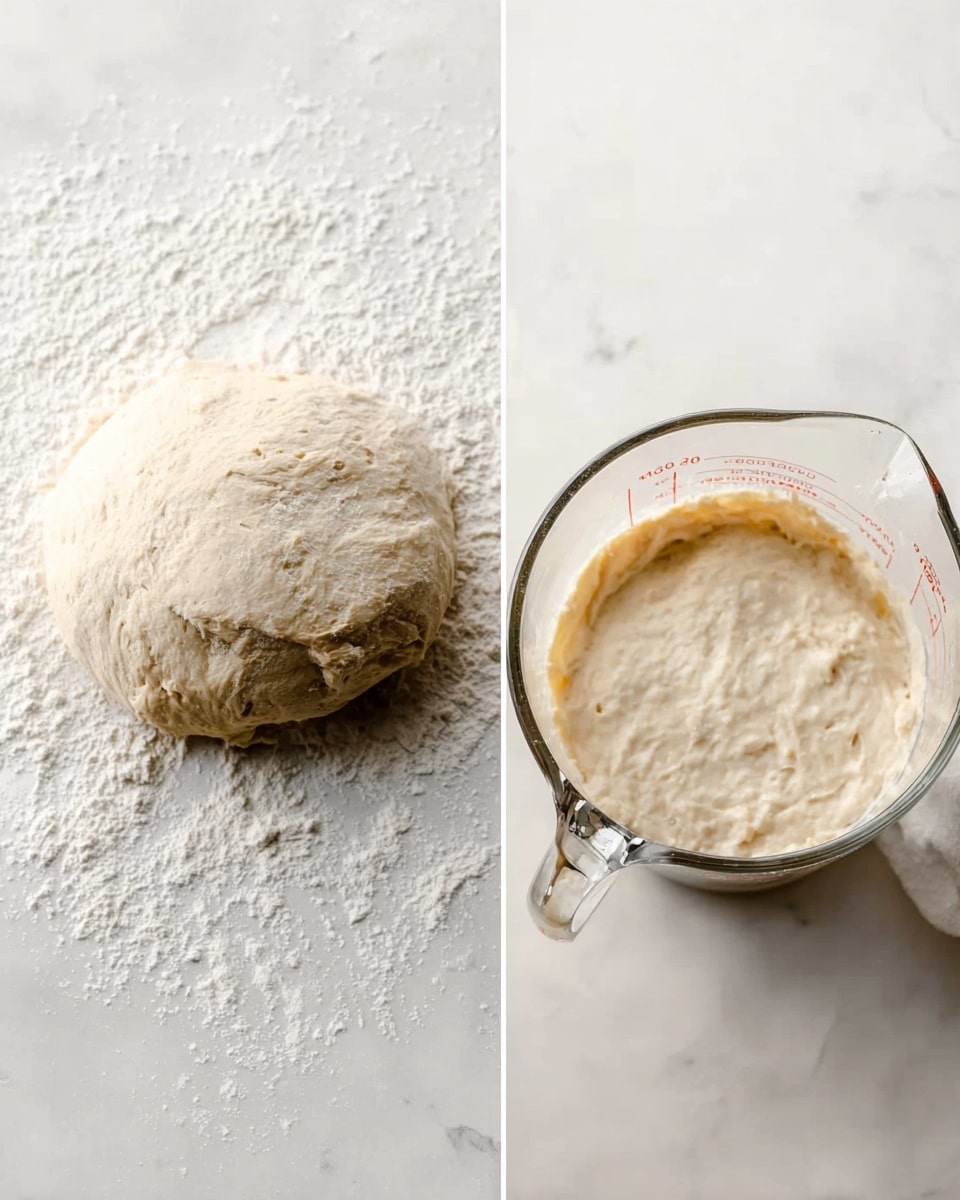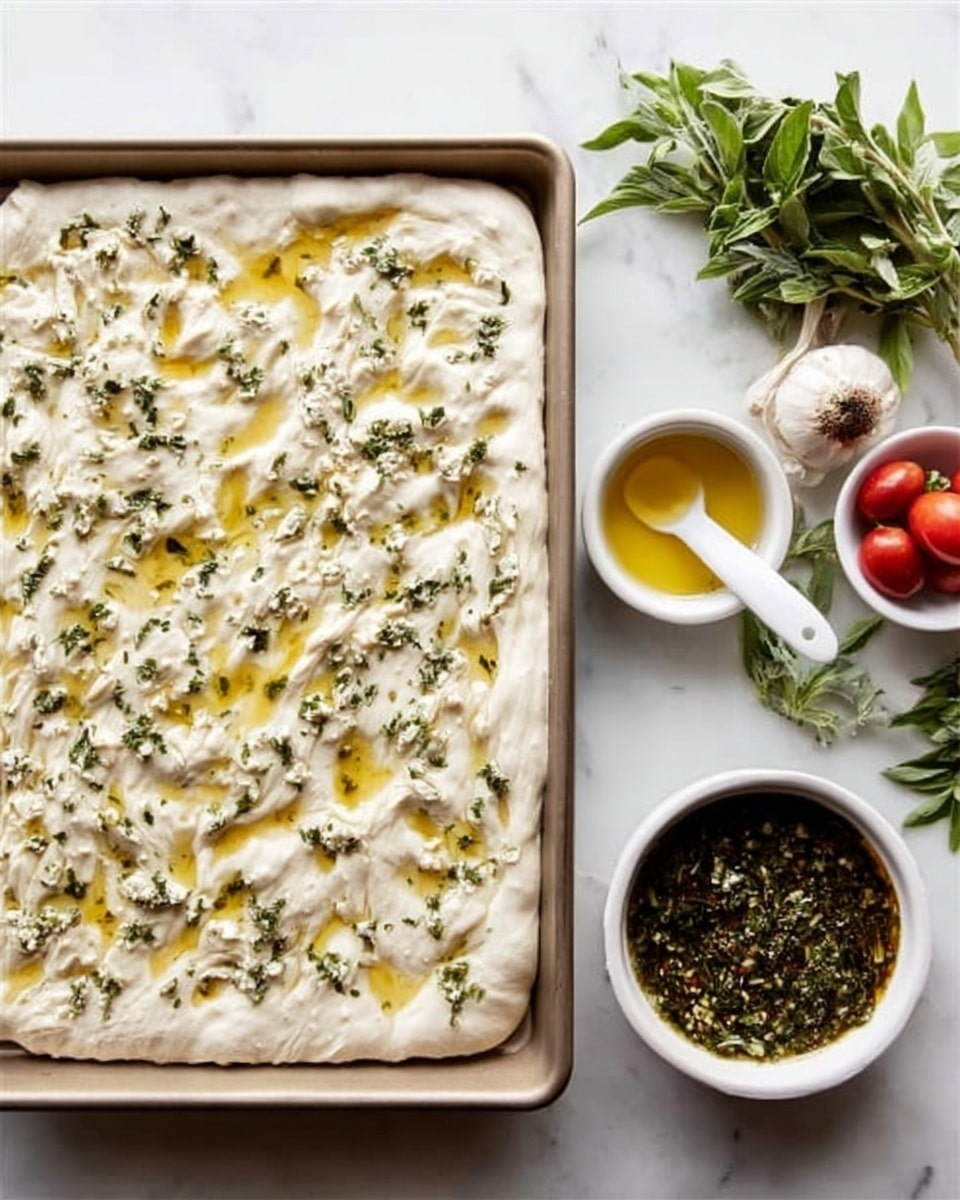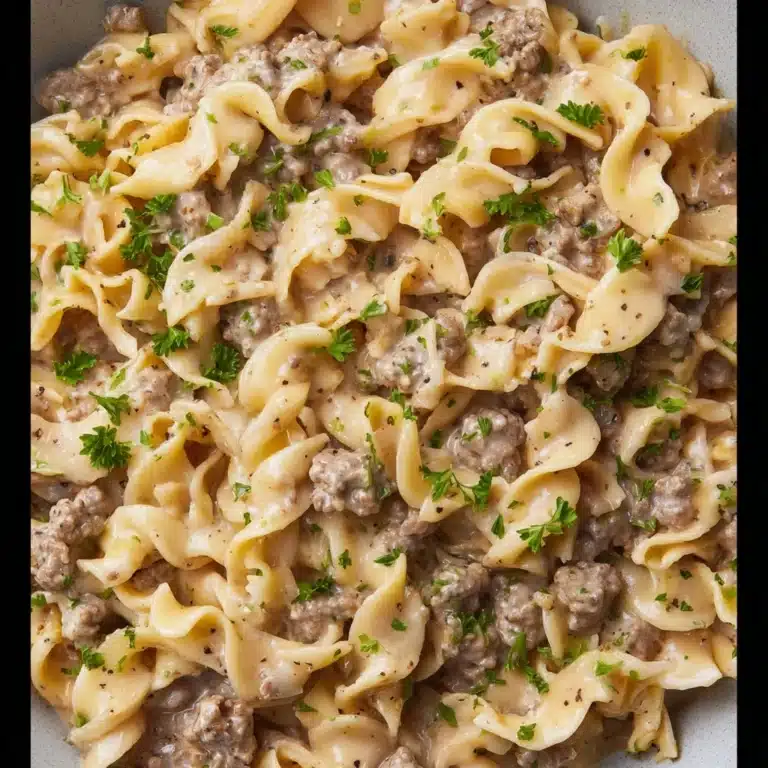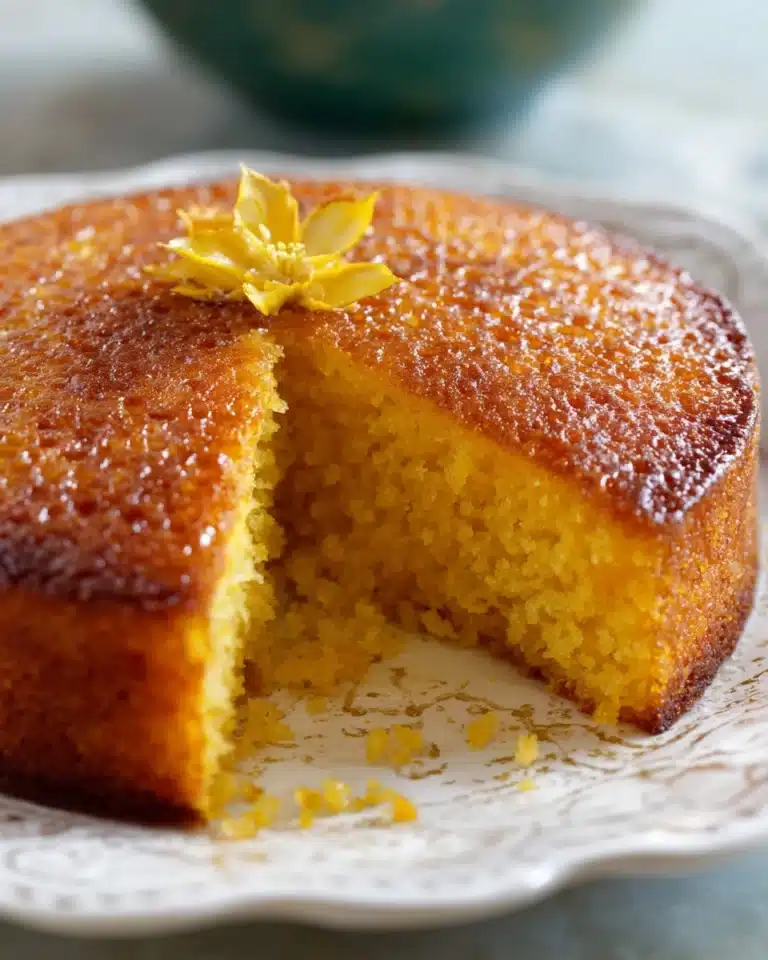“`html
There is something truly magical about homemade bread, and this Garlic Rosemary Herb Focaccia Recipe is a shining star among them. Imagine a golden, crispy crust infused with fragrant garlic and fresh herbs, yielding a soft, airy interior that just melts in your mouth. It’s the perfect rustic yet elegant bread that feels both comforting and a touch gourmet, guaranteed to bring a smile to anyone’s face. This recipe shows you how to create that irresistible focaccia at home with simple ingredients and a bit of patience, rewarding you with a loaf that’s bursting with flavor and aroma.
Ingredients You’ll Need

For a recipe as wonderfully fragrant as this Garlic Rosemary Herb Focaccia Recipe, the ingredients are beautifully straightforward yet carefully chosen. Each one plays an essential role—from the olive oil’s fruity richness to the fresh herbs’ vibrant scents—coming together to create that iconic focaccia character.
- Warm water: Activates the yeast and helps develop the perfect dough texture.
- Granulated sugar: Feeds the yeast, promoting a nice rise and subtle sweetness.
- Instant or active dry yeast: The rising hero of your focaccia, ensuring the dough gets fluffy and airy.
- Extra virgin olive oil: Adds a luscious richness and creates that beautifully crisp crust.
- Kosher salt: Enhances flavors and balances the dough without overpowering.
- All-purpose or bread flour: Provides the structure and chewiness that make focaccia so inviting.
- Minced garlic: Imparts a warm, punchy aroma that fills your kitchen—and your bread—with irresistible charm.
- Fresh herbs (basil, thyme, rosemary): Layer delightful complexity and freshness that perfectly complement the garlic.
- Coarse salt and freshly ground black pepper: Final touches that add crunch and a slight kick to every bite.
You’ll find the full ingredient list, instructions, and print option in the recipe card below.
How to Make Garlic Rosemary Herb Focaccia Recipe
Step 1: Activate and Mix the Yeast
Start by whisking half of the warm water with sugar and yeast to awaken those magical little bubbles that will help your focaccia rise beautifully. Letting this mixture rest for five minutes creates a foamy head that signals the yeast is alive and ready, the foundation for your dough’s airy texture.
Step 2: Form the Dough
Adding in the remaining water, olive oil, salt, and part of the flour, you’ll gently combine the ingredients on low speed. As you add more flour, the dough starts to take shape. This stage is all about developing the right balance—not too sticky but still soft, prepping for that satisfying knead ahead.
Step 3: Knead for Perfect Texture
Whether using your stand mixer or working the dough by hand, kneading is crucial. It builds gluten strands to create that coveted chewiness. If the dough feels a little tacky, add flour sparingly. The ‘windowpane test’ is your best friend here—if the dough stretches thin without tearing, you’re right on track!
Step 4: Let It Rise and Develop Flavor
Coat your dough lightly in oil and let it rest in a warm spot, covered snugly. This rise is where the dough doubles in size and begins building its irresistible flavor. Creating a cozy, warm environment—like the slightly warm oven trick—helps if your kitchen is chilly.
Step 5: Shape, Rest, and Chill
Transfer your dough to a well-oiled pan, then stretch and press it gently to fit. If the dough resists and shrinks back, giving it a short rest helps relax the gluten. Pop it into the refrigerator for at least an hour, but overnight really enhances depth of flavor, making this step well worth the wait.
Step 6: Prepare Toppings and Preheat Oven
Mix fresh minced garlic and herbs with the remaining olive oil, creating that luscious topping mixture. As your oven heats up to a high temperature, you’re setting the stage for a crust that’s crisp on the outside and tender inside.
Step 7: Dimple, Drizzle, and Bake
Using your fingers, dimple the surface of the dough, charmingly rustic and perfect for trapping pockets of the olive oil-herb mixture. Generously spread this topping over the dough, sprinkle with coarse salt and pepper, then bake until beautifully golden, finishing with a quick broil for an extra toasted top if you like.
How to Serve Garlic Rosemary Herb Focaccia Recipe

Garnishes
A delicate drizzle of olive oil or a few extra fresh herb sprigs turn this focaccia from delicious to divine. A sprinkle of flaky sea salt right before serving amps up the flavor and gives that inviting crunch that makes each bite memorable.
Side Dishes
This focaccia shines alongside soups and salads—imagine a steamed bowl of tomato basil soup or a crisp Mediterranean salad. It also pairs beautifully with cheeses and charcuterie, making it a perfect companion for any casual or elegant meal.
Creative Ways to Present
Slice the focaccia like a pizza or cut into rustic squares for casual sharing. You can even use it as a sandwich base for caprese or roasted vegetable stacks. A fun twist is serving it warm with flavored butters or tapenades, transforming simple bread into a standout dish.
Make Ahead and Storage
Storing Leftovers
Wrap leftover focaccia tightly in plastic wrap or foil and keep it at room temperature for up to two days. It maintains its wonderful texture longer this way, ready to delight with minimal reheating.
Freezing
You can freeze cooled focaccia for up to three months. Slice it first for easier thawing or freeze the whole loaf wrapped well. Let it thaw overnight in the fridge or at room temperature for a few hours before enjoying.
Reheating
To revive that just-baked crispness, warm slices in the oven at 300°F (149°C) for about 5 minutes. The microwave works too, but the oven method helps the herb-scented crust shine and prevents sogginess.
FAQs
Can I use dried herbs instead of fresh in this Garlic Rosemary Herb Focaccia Recipe?
Absolutely! Dried herbs work well—just use about half the amount compared to fresh herbs to avoid overpowering the bread. They’ll still lend plenty of wonderful aroma and flavor.
How long should I let the dough rise for the best results?
The initial rise should take 2 to 3 hours at room temperature until doubled. Then resting the shaped dough overnight in the refrigerator enhances the flavor dramatically, but if you’re short on time, at least 1 hour is essential.
Why do I need to dimple the dough before baking?
Dimpling creates pockets to trap olive oil and herbs on the surface, which is key to focaccia’s signature crisp crust and rich flavor. It also prevents the dough from puffing up unevenly during baking.
Can I make this focaccia without a stand mixer?
Definitely! Kneading by hand works beautifully and lets you connect more with the dough. Just be prepared to knead on a lightly floured surface for about 5 minutes until smooth and elastic.
What can I serve this focaccia with?
Think Mediterranean: soups, salads, grilled vegetables, cheeses, or charcuterie. It also pairs well as a snack with dips like hummus or even drizzled with balsamic glaze for a sophisticated touch.
Final Thoughts
In every bite of this Garlic Rosemary Herb Focaccia Recipe, you’ll experience the magic of homemade bread elevated by the simplest, freshest ingredients. It’s a rewarding project for your kitchen that guarantees smiles around your table, whether for a casual lunch or a special occasion. Give it a try—you won’t regret filling your home with that warm, herb-scented welcome!
“`
PrintGarlic Rosemary Herb Focaccia Recipe
This Garlic Rosemary Herb Focaccia is a fragrant, soft, and flavorful Italian flatbread infused with fresh herbs, garlic, and a crisp olive oil crust. Perfect as a snack, appetizer, or side, it combines traditional yeast-risen dough with a simple herb and garlic topping, baked to golden perfection.
- Prep Time: 15 minutes
- Cook Time: 23 minutes
- Total Time: 16 hours 38 minutes
- Yield: 2 servings
- Category: Bread
- Method: Baking
- Cuisine: Italian
- Diet: Vegetarian
Ingredients
Dough
- 2 cups (480ml) warm water (between 100–110°F, 38–43°C)
- 2 teaspoons granulated sugar
- 2 teaspoons instant or active dry yeast (slightly less than 1 standard packet)
- 1/4 cup (60ml) extra virgin olive oil
- 1 Tablespoon kosher salt
- 4 and 1/2–5 cups (563–625g) all-purpose flour or bread flour (spooned & leveled), plus more for hands
Topping
- 5 Tablespoons (75ml) extra virgin olive oil or more as needed, divided
- 2 garlic cloves, minced
- 3–4 Tablespoons chopped fresh herbs such as basil, thyme, and rosemary (or 2 Tablespoons dried herbs)
- sprinkle of coarse salt
- freshly ground black pepper
Instructions
- Prepare the dough: Whisk half of the warm water (1 cup; 240ml), sugar, and yeast together in the bowl of a stand mixer fitted with a dough hook or paddle attachment. Cover and allow to rest for 5 minutes until foamy.
- Mix dough ingredients: Add the remaining water, olive oil, kosher salt, and 1 cup (130g) flour to the yeast mixture. Beat on low speed for 20 seconds, then gradually add 3 and 1/2 cups (440g) more flour and beat on low speed for 2 minutes. Add the last 1/2 cup (60g) flour if dough is still sticky.
- Knead the dough: Continue beating in the mixer for 5 more minutes or knead by hand on a floured surface for 5 minutes until the dough is soft, slightly tacky, and passes the windowpane test.
- Let dough rise: Lightly grease a bowl with oil and place the dough inside, turning to coat all sides. Cover and let rise at room temperature for 2–3 hours or until doubled in size.
- Prepare the pan: Generously grease a 12×17-inch baking pan with 2 tablespoons olive oil using a pastry brush.
- Shape the dough: Punch down the risen dough to release air bubbles and transfer it to the greased pan. Stretch and flatten to fit. If it resists, cover and rest 5–10 minutes before continuing.
- Refrigerate dough: Cover tightly and refrigerate for at least 1 hour, preferably 12 hours or up to 24 hours for enhanced flavor.
- Preheat oven: Remove dough from refrigerator and let it sit covered at room temperature while preheating the oven to 450°F (232°C) for 10–15 minutes.
- Prepare toppings: Whisk together remaining 3 tablespoons olive oil with minced garlic and chopped herbs.
- Dimple and oil dough: Use fingers to create dimples all over the dough surface. Drizzle the herb and garlic oil evenly and spread with hands or pastry brush. Sprinkle with coarse salt and freshly ground black pepper.
- Bake the focaccia: Bake for 20–23 minutes until lightly browned. Optionally broil on high for 1 minute to deepen the crust color.
- Serve: Cut and serve warm or at room temperature. Store leftovers at room temperature up to 2 days, refrigerate up to 1 week, or freeze for up to 3 months. Reheat slices in microwave or in a 300°F (149°C) oven for 5 minutes.
Notes
- For a warm rising environment on cold days, place dough in an oven preheated to 150°F (66°C), then turned off, with the door slightly ajar.
- Do not add too much flour during kneading to keep dough soft and slightly tacky. The dough should slowly bounce back when poked.
- Resting the shaped dough in the refrigerator for several hours enhances the flavor through slow fermentation.
- Use a pastry brush to evenly spread olive oil on the pan and dough for a perfect crust.
- Broiling the focaccia for a last minute creates a crispier and darker top crust but watch closely to avoid burning.
- Focaccia is delicious both warm and at room temperature and pairs well with soups, salads, or as sandwich bread.








